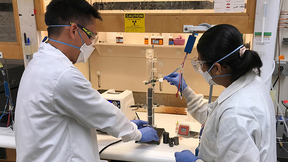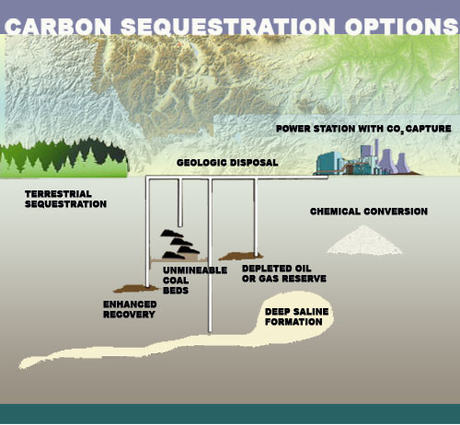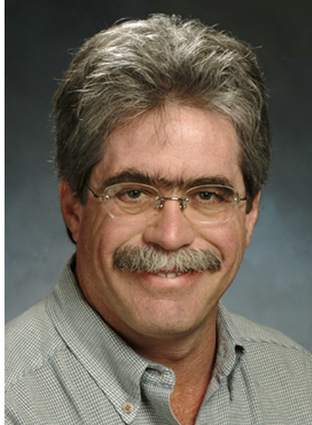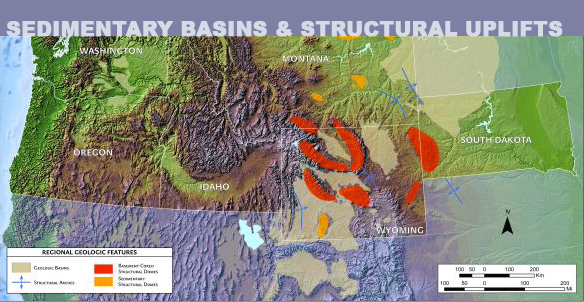Underground testing for carbon sequestration
Who would be willing to pay a higher energy bill to help save the planet?
Roger Aines would. And he’s doing his part to lend a hand to the planet by spearheading a Laboratory effort that looks at sequestering carbon dioxide (CO 2 ) — produced by coal or natural gas power plants — in geological formations in Montana and Wyoming.
Aines’ project is part of Phase III of the Big Sky Carbon Sequestration Partnership — which is just one of seven partnerships that are the flagships of the Department of Energy’s Carbon Sequestration Program. The ultimate goal of each partnership is demonstration that one million tons of carbon dioxide can be sequestered in underground sedimentary rock safely and effectively.
The Big Sky Carbon Sequestration Partnership consists of universities, national laboratories, private companies, state agencies and Native American tribes and encompasses Montana, Wyoming, Idaho, South Dakota and eastern Washington and Oregon. The project relies on existing technologies from the fields of engineering, geology, chemistry, biology, geographic information systems and economics to develop new approaches for geologic carbon storage in the region.
The greenhouse gas CO 2 emitted from power plants, auto emissions, refineries and other industries is contributing to climate change: warming of the oceans, melting of Arctic glaciers, rising sea levels, less snow and more rain. Geological carbon sequestration — which captures carbon dioxide at the source and transports it to a storage location where it is pressurized and injected deep underground for long-term isolation from the atmosphere — is one solution to reduce greenhouse gas emissions, according to Aines.
Large sedimentary rock formations in Wyoming and Montana have been identified as ideal locations for underground carbon storage.
"This rock is porous like a sponge," Aines said. "Wyoming is well endowed, with rocks with enough capacity to offset a large fraction of the United States production of CO 2 ."
Though Phase I and II of the project have begun, Aines is waiting for funding to begin Phase III, when an actual test of large-scale injection of CO 2 occurs, which will require creating computer simulations of chemical reactions, mechanical changes and what happens to underground flow and transport in the rock when CO 2 is pumped far underground. The LLNL team will be using some of the same computer codes used to determine how tunnels, such as those in the mining industry, fail under great pressure.
"We’re basically using the codes to do the opposite of what they were originally designed for," Aines said. "How would the rock expand under great pressure? The rock is going through a lot of mechanical changes. You don’t want to break the rock because you’re injecting a lot of volume in the rock."
Appropriate geological formations for carbon storage have a caprock overlaying an impermeable rock layer that prevents the CO 2 from returning to the atmosphere. The CO 2 is injected at a rate slow enough so that it can dissipate throughout the rock. Geological formations well suited for carbon storage include deep saline formations, flood basalt formations, depleted oil and gas reserves and unmineable coal beds. The Big Sky program focuses on large saline aquifers in Montana and Wyoming.
California and Washington state have already mandated that any new coal-fired power plant must sequester 50 percent of its CO 2 in order to sell long term power to those states. Natural gas plants, which are sprouting up throughout the West, emit 50 percent less CO 2 than a coal-fired power plant. Ultimately the goal is for both coal-powered and natural gas plants to participate in geological sequestration, but for now, coal plants will have to sequester half of their CO 2 to match the performance of natural gas power plants. And if geological sequestration is a viable option for storing CO 2 , energy prices could go up by 20 percent to 30 percent, Aines said.
Phase III of the project will involve a demonstration project in an existing natural gas processing facility in Wyoming in which the natural gas and CO 2 are already separated. The CO 2 will be pushed more than 10,000 feet deep into a large saline aquifer close to the plant.
"This project will be used to demonstrate permanent storage" of CO 2 , Aines said.
Phase II of the Big Sky project is under way with a pilot sequestration project in southeast Washington in which 1,000 tons of carbon will be stored deep in a basalt formation. Big Sky Outreach and Community Coordinator Lindsey Waggoner said Phase II is designed to validate the technical and economic feasibility of carbon sequestration, develop monitoring and verification protocols and to analyze the policy and regulatory frameworks of carbon sequestration in the Big Sky region.
She said more technical studies need to be conducted in Montana and Wyoming before Phase III of the demonstration project can begin.
But Aines is enthusiastic about getting started.
"There are no power plants today that are capturing lots of CO 2 ," he said. "We need to understand how to store CO 2 underground well no matter where it comes from. We’re putting benign trash (CO 2 ) into the atmosphere, and cleaning up costs money. No one gets a free lunch. We have to do what makes sense and what’s safe."
Contact
Anne M. Stark[email protected]
Tags
Earth and Atmospheric ScienceSequestration
Featured Articles











